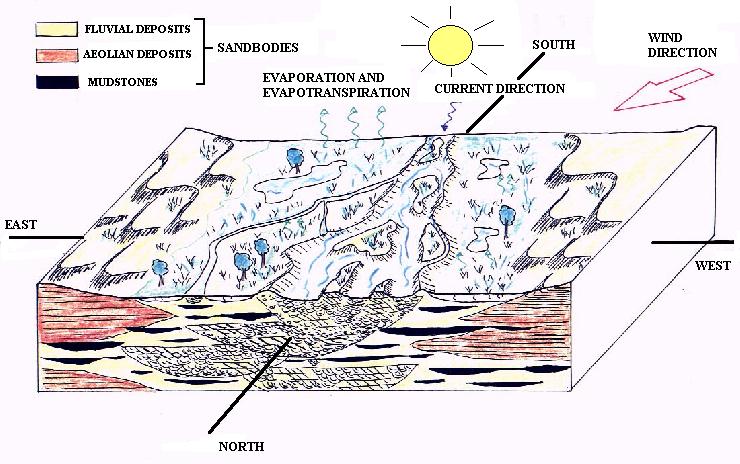

The lower Miocene Galoc clastic unit, offshore Palawan, Philippines, is about 500-600 ft thick. Core permeability ranges from 0.1 to 1 md, and porosities range from 15 to 20%. In the porous chlorite-cemented facies, dissolution of framework grains and chlorite cement increased porosity, and a second chlorite cement was precipitated. Small plates of chlorite fill interparticle pores, and secondary pores are rare. In the tightly chlorite-cemented facies, permeabilities are less than 0.3 md, and porosities range from 8 to 16%. Gray, tightly chlorite-cemented bands are macroscopically and microscopically distinct from green, porous chlorite-cemented bands.

Two types of diagenetic clay fabric are interbedded, forming distinct alternating bands 0.1 in. Authigenic clay (predominantly chlorite) generally cements sands intermediate in grain size between those cemented by calcite and those cemented by quartz. Core permeabilities are generally less than 0.01 md, and porosities range from 7 to 15%. Sparry calcite filled all available pores and replaced some feldspar. The calcite-cemented facies predominates in very fine grained sandstones and siltstones and encroaches into adjoining sandstones irrespective of grain size. There are four major diagenetic facies (portions of core that can be grouped by the predominance of one diagenetic cement and similar appearance in more » hand specimen): (1) calcite cemented (2) chlorite cemented, tight (3) chlorite cemented, porous and (4) quartz overgrowths, porous. Porosity is mostly secondary, having formed through dissolution of VRF and feldspar grains. Grain size ranges from very fine to coarse sand. The sandstones are feldspathic litharenites containing subequal proportions of volcanic rock fragments (VRF), feldspar, and quartz grains. One hundred and sixty thin sections from 350 ft of core were petrographically described. McAllen Ranch field produces natural gas from 12 deep, overpressured sandstone packages, each interpreted to be the deposit of a prograding shelf-edge delta. The local trend of reservoir sandstones may be controlled in part by faulting that was contemporaneous with deposition. Yegua sandstones produce gas and condensate at nearby Toro Grande field on a gentle, faulted anticline. Much of the porosity is secondary more » and is the result of the dissolution of cements, volcanic rock fragments, and feldspar grains. Average porosity is 29% and permeabilities are in the range of 60-1600 md in the clean sandstones. The sandstones contain an average of 50% quartz and are classified as volcanic-arenites to feldspathic litharenites. The sandstones are interpreted to be turbidites of the AB type that were deposited within channels. Grain size within beds fines upward from 0.18 mm at the base to 0.05 mm at the top. Sedimentary structures within the beds range from a lower massive division to a laminated or rippled upper division. The sandstones are fine to very fine grained and occur in thin beds that are 0.5-9 ft (0.15-2.7 m) thick. The section is similar to reservoirs recently discovered in the area at the Toro Grande (1984), Lost Bridge (1984), and El Torito (1985) fields.

The sandstones are enclosed in thick marine shales and are about 20 mi (32 km) downdip from thicker and more abundant sandstones in the Yegua Formation. Total thickness of the sandstone section is approximately 240 ft (73 m). Yegua sandstones at a depth of 8300-8580 ft (2530-2615 m) were partly cored in the Arco Jansky 1 dry hole.


 0 kommentar(er)
0 kommentar(er)
